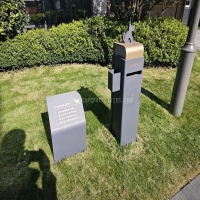Welcome to the website for landscape facilities products and knowledge.
How does the bin’s design ensure it remains unobtrusive in natural or scenic areas?
In natural or scenic areas, maintaining the aesthetic harmony of the environment is crucial. Bin designs achieve this through several thoughtful features. First, they often use neutral or earth-toned colors like greens, browns, and grays, allowing them to blend effortlessly with surrounding foliage or landscapes. Materials such as weathered wood, stone-textured plastics, or recycled metals further enhance their camouflage effect.
Another key aspect is the minimalist shape. Unlike bulky urban bins, these designs are streamlined and low-profile, avoiding sharp edges or bright accents that might draw attention. Some bins are even partially buried or integrated into existing structures like benches or rock formations, reducing their visual footprint.
Additionally, strategic placement plays a role. Bins are positioned along natural pathways or behind vegetation, ensuring functionality without becoming focal points. Modern designs also prioritize silent lids and odor control to prevent sensory disruption. By combining these elements, bins serve their purpose while preserving the untouched beauty of scenic locations.
Innovations like solar-powered compactors or animal-proof mechanisms add practicality without sacrificing discretion. Ultimately, unobtrusive bin design exemplifies how human infrastructure can coexist respectfully with nature.
Related search:

Recommendation
Outdoor cat and dog feces trash can; Community pet trash can; Metal multi-color design